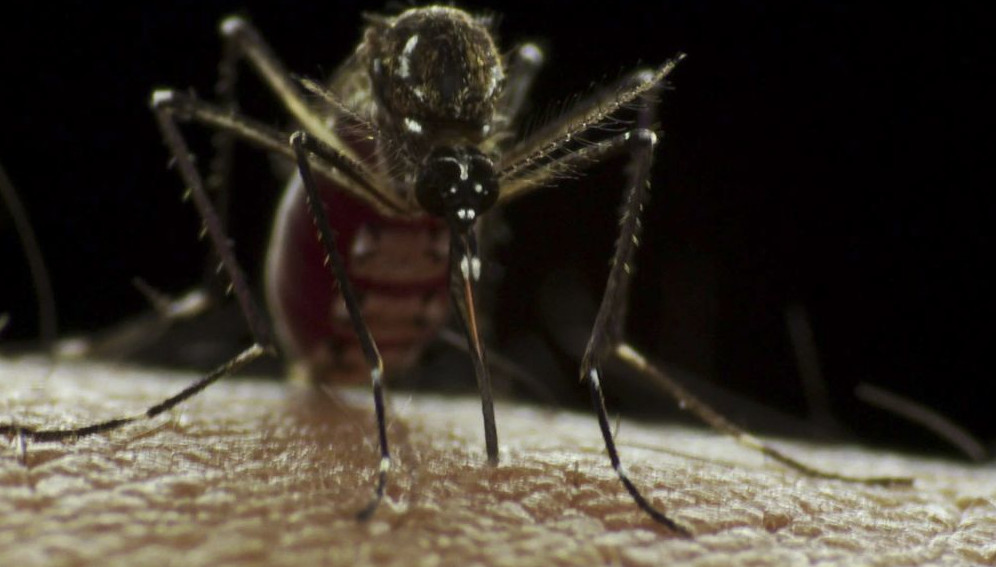
[NEW DELHI] An index which measures temperature changes in the Indian Ocean could provide an early warning of dengue outbreaks, to trigger a more effective public health response, researchers say.
Nearly half the world’s population is at risk from dengue, a mosquito-borne viral disease common in tropical climates that causes up to 400 million infections a year, according to the World Health Organization (WHO).
Sea surface temperature fluctuations in the Indian Ocean may predict the severity of dengue outbreaks up to nine months in advance in some Asian and South American countries, a study published in Science suggests.
“While local temperature can provide a forecast up to three months in advance, the IOBW index extends this lead-time to nine months, offering a more robust early warning system.”
Yiting Xu, School of National Safety and Emergency Management, Beijing Normal University
Scientists identified the Indian Ocean basin-wide index (IOBW), a measure of average sea-surface temperatures in the basin as the “most influential in impacting dengue outbreaks in both hemispheres” after examining 30 global climate indices.
The international team of researchers say higher sea surface temperatures in the Indian Ocean can alter weather patterns globally, fostering environments conducive to mosquito breeding and the spread of dengue.
Local climate indicators like temperature drive seasonal dengue upticks, but global climate patterns also capture yearly incidences, they say.
“While local temperature can provide a forecast up to three months in advance, the IOBW index extends this lead-time to nine months, offering a more robust early warning system,” says study co-author Yiting Xu at the School of National Safety and Emergency Management, Beijing Normal University, China.
Current dengue early warning systems use climate indicators such as rainfall and temperature to predict disease trends. For instance, El Niño events impact dengue transmission dynamics worldwide by affecting mosquito breeding conditions.
To unravel long-distance climate drivers of dengue outbreaks, researchers modelled associations between global climate patterns and seasonal and yearly case numbers, using dengue case data reported from 32 countries in the Americas and 14 in Asia, including India, between 1990 and 2019.
The index could effectively model dengue outbreaks not only in Asian countries such as Thailand, Singapore and the Philippines but also South American countries like Venezuela, Brazil and Peru.
A simulation of dengue transmission scenarios with and without the IOBW index accurately reproduced the 2015-2016 outbreak and the substantially reduced dengue epidemics worldwide in 2017-2018, corresponding to a warm IOBW event in 2015-2016 and a cold IOBW event in 2017-2018.
The researchers plan to include factors like vector control, socioeconomic conditions, and local herd immunity to improve future validations and develop comprehensive indicators for dengue early warning systems.
Ramesh Dhiman, an environmental epidemiologist and formerly with the Indian Council of Medical Research’s National Institute of Malaria Research, says rainfall, water supply and a community’s lifestyle – for example housing and personal protection measures – also affect disease transmission and the timing of outbreaks.
“A lot can change in the time leading up to the outbreak with regard to rainfall pattern, number of rainy days, and continuous or interrupted rainfall,” says Dhiman, adding: “It may not be possible to predict outbreaks more than four to five months ahead of time.”
But Dhiman says rainfall indirectly results in better survival of Aedes mosquito vectors through increased humidity.
“Our studies in India… have found that dengue outbreaks are closely linked to El Niño events, as well as monsoon and post-monsoon rains in some states, whereas others show a decrease in dengue cases during summer El Niño events,” says Dhiman.
He also warned that as temperatures rise, regions previously too cold for dengue may start experiencing local transmission of the disease.
This piece was produced by SciDev.Net’s Asia & Pacific desk.




